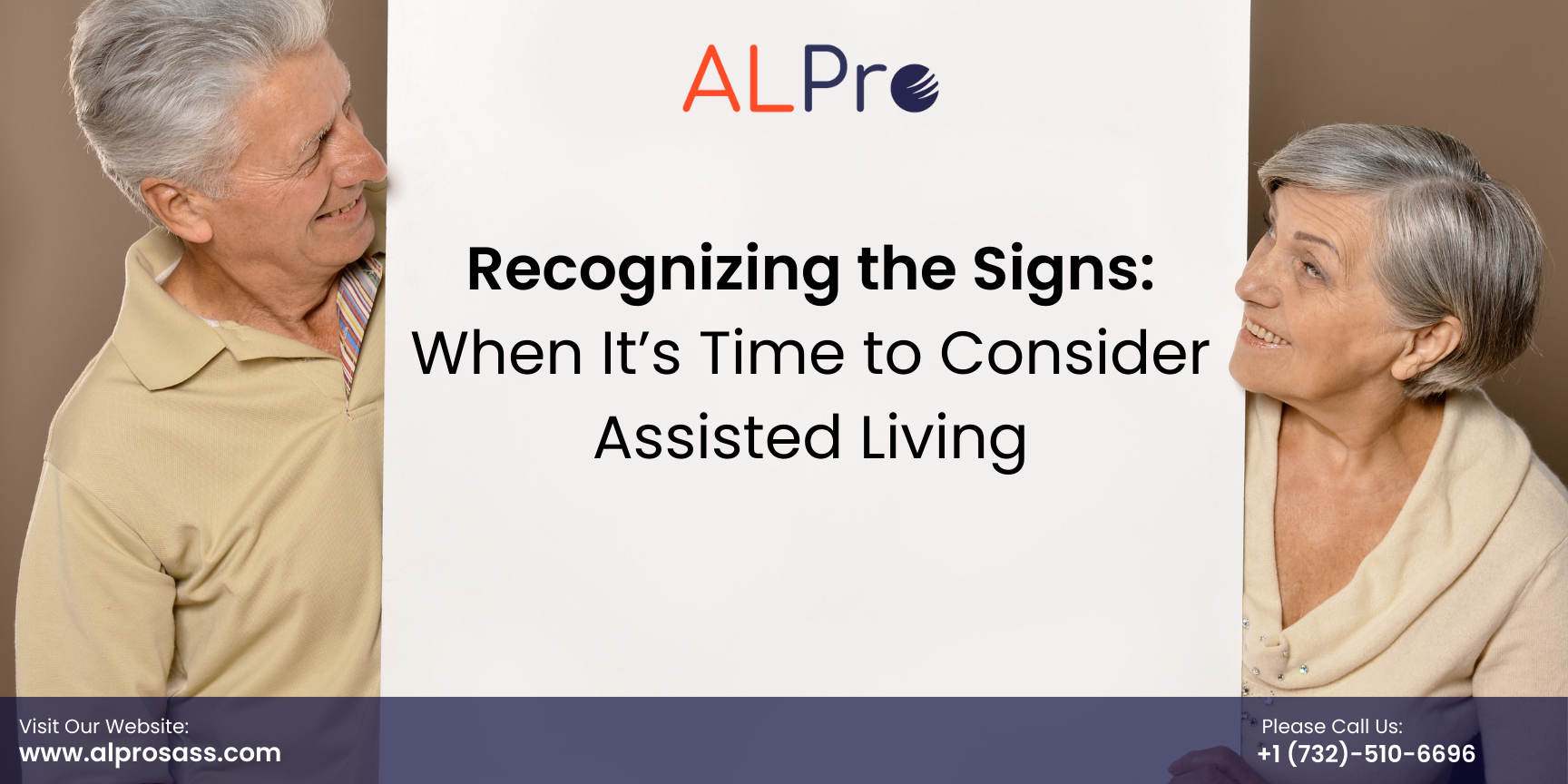Recognizing the Signs - When It’s Time to Consider Assisted Living

Deciding when a loved one might need assisted living is a sensitive and challenging topic for families. While many seniors wish to remain in their own homes, there comes a point when staying at home may compromise their safety, health, or quality of life. Recognizing the signs that indicate it might be time to consider assisted living can help families make an informed and compassionate decision.
This blog highlights key indicators, such as difficulty managing daily tasks, safety concerns, and social isolation, and guides families through this critical transition.
Why Recognizing the Signs MattersTimely intervention can significantly improve a senior’s well-being. When families notice changes in their loved one’s ability to live independently, assisted living can provide the support they need to maintain dignity, safety, and a high quality of life.
Signs It May Be Time to Consider Assisted Living 1. Difficulty Managing Daily TasksActivities of daily living (ADLs) such as cooking, cleaning, dressing, or bathing can become increasingly difficult with age.
What to Look For:
Chaotic living spaces or neglected household chores.
Difficulty with personal hygiene, wearing mismatched or soiled clothing.
Struggles with meal preparation, leading to skipped meals or reliance on unhealthy, prepackaged food.
Why It Matters: Challenges in managing daily tasks can lead to malnutrition, poor hygiene, and a diminished quality of life. Assisted living provides the necessary support while allowing seniors to retain as much independence as possible.
2. Safety Concerns at HomeHome environments can pose safety risks as mobility, balance, and cognitive abilities decline.
What to Look For:
Frequent falls, bruises, or unexplained injuries.
Difficulty navigating stairs or moving safely around the house.
Forgetting to turn off the stove or experiencing electrical or fire hazards.
Wandering or getting lost, particularly for those with memory impairments.
Why It Matters: A safe environment is essential for seniors to thrive. Assisted living facilities are designed with safety in mind, featuring accessible layouts, grab bars, and 24/7 emergency staff support.
3. Health Declines or Medication MismanagementManaging chronic conditions and medications can become overwhelming for seniors, leading to missed doses or health complications.
What to Look For:
A noticeable decline in physical health, such as weight loss, weakness, or recurring illnesses.
Difficulty keeping track of medications, leading to missed doses or overdosing.
Uncontrolled symptoms of chronic conditions like diabetes or hypertension.
Why It Matters: Assisted living communities offer medication management and on-site medical support, ensuring residents’ health needs are met consistently.
4. Social Isolation and LonelinessAs seniors age, their social circles often shrink due to retirement, mobility issues, or losing friends and loved ones.
What to Look For:
Withdrawal from social activities or a lack of interest in hobbies.
Signs of depression, such as sadness, irritability, or changes in sleep patterns.
Reluctance to leave the house or interact with others.
Why It Matters: Social isolation can have serious health consequences, including an increased risk of depression, cognitive decline, and heart disease. Assisted living communities provide vibrant social opportunities, fostering friendships and engagement.
5. Cognitive Decline or Memory IssuesMemory loss or confusion may make it difficult for seniors to manage their day-to-day lives safely and effectively.
What to Look For:
Difficulty remembering appointments, paying bills, or handling finances.
Misplacing items or forgetting familiar routes.
Repeating questions or stories or showing signs of confusion about time or place.
Why It Matters: Assisted living communities, especially those with memory care services, are equipped to support seniors with cognitive challenges, offering structured routines and safe environments.
6. Caregiver BurnoutFamily members often take on caregiving roles, which can become increasingly demanding as a loved one’s needs grow.
What to Look For:
Emotional or physical exhaustion in caregivers.
Feelings of guilt, frustration, or being overwhelmed.
A decline in the quality of care due to caregiver stress.
Why It Matters: Assisted living relieves families of the constant demands of caregiving while ensuring their loved one receives professional, compassionate support.
How Assisted Living Can HelpAssisted living facilities are designed to provide residents with the care they need while promoting independence and a fulfilling lifestyle.
Personalized Care: Tailored support for ADLs, health needs, and medication management.
Safe Living Environments: Accessibility features and 24/7 emergency response systems.
Social Engagement: Activities, outings, and communal dining to combat isolation.
Health and Wellness Programs: Access to fitness programs, therapies, and preventive healthcare.
By offering a balance of assistance and autonomy, assisted living allows seniors to maintain their dignity while enjoying a higher quality of life.
Next Steps for FamiliesIf you recognize these signs in your loved one, here’s how to take the following steps:
Open the Conversation: Approach the topic with empathy and understanding. Emphasize the benefits of assisted living rather than focusing on limitations.
Research Options: Visit multiple communities to compare services, amenities, and staff. Ask about safety measures, care plans, and resident satisfaction.
Involve Your Loved One: Incorporate them in the decision-making process to ensure their preferences and requirements are prioritized.
Plan Financially: Evaluate costs and explore payment options such as savings, long-term care insurance, or veterans’ benefits.
The key to ensuring your loved one's safety, health, and happiness is to recognize when it is time to consider assisted living. It is never easy to make such a decision, but it is for their benefit. It’s ultimately about providing a supportive environment where they can thrive.
By addressing signs such as difficulty with daily tasks, safety concerns, and social isolation, families can make proactive choices that enhance their loved one’s quality of life. Assisted living offers the perfect blend of care, independence, and community, allowing seniors to enjoy their golden years with dignity and fulfillment.
